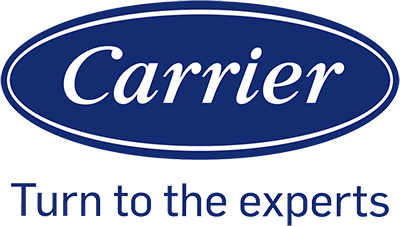When we think about keeping our HVAC system in good shape, we often focus on filters, thermostats, or regular tune-ups. What many of us overlook is the role of clean air ducts. By keeping air ducts free of dust and buildup, we help our HVAC system run more smoothly and extend its overall life.
Clean ducts reduce strain on the system because air can move without blockages. Less strain means fewer breakdowns and less wear on important parts. Over time, this simple step can make a real difference in how long our system lasts.
We also benefit from better airflow, improved efficiency, and healthier indoor air. As we explore how duct cleaning supports system life, lowers costs, and improves air quality, it becomes clear why this maintenance step deserves more attention.
How Air Duct Cleaning Extends HVAC System Life
Clean air ducts help the HVAC system run with less effort, keep temperatures stable, and reduce unnecessary damage to key parts. By removing dust and debris, we lower the chance of costly repairs and improve system longevity.
Reducing Strain on HVAC Components
When air ducts fill with dust, dirt, and pet dander, airflow slows down. The blower motor then has to work harder to push air through the blocked passages. This extra workload shortens the motor’s life and increases the chance of breakdowns.
By keeping ducts clear, we allow air to move freely. This reduces the stress placed on the blower motor, fan, and other moving parts. With less strain, these components operate at normal capacity instead of being pushed beyond their limits.
Lower strain means fewer HVAC repairs and less energy use. Clean ducts also help the system maintain a steady airflow, which supports balanced heating and cooling in every room.
Preventing System Overheating
Dust buildup in ducts traps heat inside the system. When airflow is restricted, the equipment cannot release heat as it should. This can cause the furnace or air conditioner to overheat, forcing safety switches to shut the system down.
Overheating often leads to repeated shutdowns, which weakens electrical parts and shortens the system lifespan. In some cases, the blower motor or heat exchanger may fail completely. These are expensive repairs that could be avoided with proper duct cleaning.
By keeping ducts clear, we help prevent these hot spots from forming. The system can release heat more efficiently, run at a safe temperature, and avoid unnecessary wear on sensitive parts.
Minimizing Wear and Tear
Every time dust and debris circulate through dirty ducts, they pass through system filters and moving parts. Even with filters in place, some particles still reach the blower motor and coils. Over time, this buildup causes friction and reduces efficiency.
Regular air duct cleaning lowers the amount of debris that enters the system. This reduces the chance of clogging, keeps filters from overloading, and protects delicate parts from abrasion.
The result is less physical damage to components and fewer sudden malfunctions. With reduced wear and tear, the HVAC system can operate smoothly for more years before major repairs or replacement become necessary.
Impact on Energy Efficiency and Cost Savings
Clean air ducts help our HVAC system run with less strain, which leads to better performance and lower operating costs. By keeping airflow clear, we use less energy, reduce monthly bills, and avoid frequent repairs that increase long-term expenses.
Improving Airflow and HVAC Efficiency
When dust and debris collect inside air ducts, airflow slows down. This forces the HVAC system to work harder to push air through the vents. Over time, the extra strain lowers system efficiency and shortens its lifespan.
By keeping ducts clean, we allow air to move freely. This reduces the workload on fans and motors. A system that runs smoothly maintains consistent temperatures and needs less time to cycle on and off.
Better airflow also supports even heating and cooling across the home. Uneven temperatures often signal restricted ducts, which can cause us to raise or lower the thermostat more often. Clean ducts prevent this problem and help the system run closer to its intended design.
Lowering Energy Consumption and Bills
When the HVAC system runs without blockages, it uses less electricity or fuel. According to the U.S. Department of Energy, heating and cooling account for nearly half of a home’s energy use. Any step that improves efficiency can lead to noticeable savings.
Clean ducts reduce the energy needed to move air through the system. This means the furnace or air conditioner does not have to run as long to reach the set temperature. Shorter run times directly lower energy consumption.
Lower energy use shows up in monthly bills. Even a small percentage of savings adds up over time. For example:
| Efficiency Gain | Estimated Annual Savings* |
|---|---|
| 5% | $50-$75 |
| 10% | $100-$150 |
| 15% | $150-$225 |
*Based on average U.S. household energy costs.
Reducing HVAC Maintenance Costs
A system that runs under less stress also avoids many common repair issues. Dust buildup can clog filters, coat blower fans, and even settle on coils. These problems often lead to overheating, frozen coils, or worn-out parts.
By cleaning ducts, we cut down on the amount of debris that reaches these components. This reduces the need for service calls and part replacements. Fewer breakdowns mean we spend less on emergency repairs.
Routine duct cleaning also helps extend the time between major maintenance visits. When technicians service a cleaner system, they can focus on fine-tuning performance instead of removing heavy buildup. Over the years, this lowers overall HVAC maintenance costs and delays the need for new equipment.
Enhancing Indoor Air Quality and Health
Clean air ducts help reduce harmful particles in the air, lower the spread of allergens, and create a more comfortable indoor space. By removing buildup that circulates through the HVAC system, we protect both air quality and our health.
Reducing Dust and Contaminants
When dust and debris build up in ducts, they circulate through the air every time the system runs. This means we end up breathing in particles that should have stayed trapped. Cleaning the ducts helps limit this constant recirculation.
The Environmental Protection Agency (EPA) notes that indoor air can often be more polluted than outdoor air. Dust, dirt, and small debris are common contributors to this problem. Regular duct cleaning reduces these pollutants and helps the HVAC system deliver cleaner airflow.
We also notice less dust settling on surfaces when ducts stay clean. This makes our living spaces easier to maintain. It also reduces the need for extra cleaning devices like air purifiers, since less dust is entering the air in the first place.
Minimizing Allergens and Mold Spores
Allergens and mold spores can collect inside ducts, especially in damp or humid environments. Once in the system, they spread throughout the home and trigger symptoms like sneezing, coughing, or itchy eyes.
By cleaning the ducts, we lower the chance of these particles moving through the air. This is especially important for people with allergies or asthma. Keeping ducts dry and clear helps prevent mold from growing and releasing spores into the system.
We can also pair duct cleaning with steps like using dehumidifiers or replacing air filters on schedule. These actions work together to keep allergens and mold spores under control and protect indoor air quality.
Supporting Better Indoor Environments
Clean ducts support a healthier and more comfortable indoor environment. With fewer particles, allergens, and spores in circulation, the air feels fresher and easier to breathe.
Good indoor air quality also reduces stress on the HVAC system. When ducts are clear, the system does not have to push air through layers of buildup. This helps maintain consistent airflow and even temperatures across the home.
We also protect vulnerable groups, such as children or older adults, who may be more sensitive to poor air quality. By keeping ducts clean, we create an environment that supports daily comfort and long-term health.
Best Practices for Effective Air Duct Cleaning
We extend the life of our HVAC system by setting a routine cleaning schedule, choosing professional duct cleaning when needed, and applying specific practices for commercial HVAC systems. Each step helps reduce strain on equipment and lowers the risk of costly HVAC repair.
Recommended Cleaning Schedule
We should follow a cleaning schedule that matches system use and building needs. For most homes, ducts need cleaning every 3 to 5 years. Heavy use, pets, or allergies may require more frequent service.
A simple guide is:
| Environment | Suggested Interval |
|---|---|
| Typical home | Every 3-5 years |
| Home with pets/allergies | Every 2-3 years |
| Commercial HVAC systems | Every 1-2 years |
We also check ducts after renovations or construction since dust and debris can quickly build up. Regular inspection helps us spot early signs of dirt, mold, or blockages.
By keeping a schedule, we prevent buildup that forces the system to work harder. This reduces wear and helps avoid unnecessary HVAC repair over time.
Benefits of Professional Duct Cleaning
Professional duct cleaning, especially from a NADCA-certified provider, offers a more thorough process than we can achieve on our own. These technicians use specialized vacuums, brushes, and blowers to remove dust, debris, and microbial growth.
We benefit from better airflow, cleaner indoor air, and less strain on motors and fans. A professional service also includes inspection for leaks, damaged insulation, or signs of moisture.
Hiring trained professionals helps us avoid improper cleaning methods that may damage ducts. It also ensures compliance with industry standards, giving us consistent results and peace of mind.
In many cases, professional cleaning extends equipment life by reducing the load on the HVAC system. This lowers the chance of breakdowns and delays the need for major HVAC repair.
Considerations for Commercial HVAC Systems
Commercial HVAC systems handle larger spaces and higher usage, so they need more frequent cleaning and monitoring. Dust, pollutants, and moisture can spread faster in these systems, which impacts both performance and indoor air quality.
We often set up cleaning every 1 to 2 years for commercial spaces. High-traffic buildings, such as offices, schools, or healthcare facilities, may require even shorter intervals.
Professional duct cleaning is especially important in commercial HVAC because improper maintenance can affect many occupants. Clean ducts reduce energy costs, improve airflow, and help avoid costly system downtime.
We also coordinate duct cleaning with other maintenance tasks, such as filter replacement and coil cleaning. This integrated approach extends system life and keeps commercial HVAC systems running efficiently.




